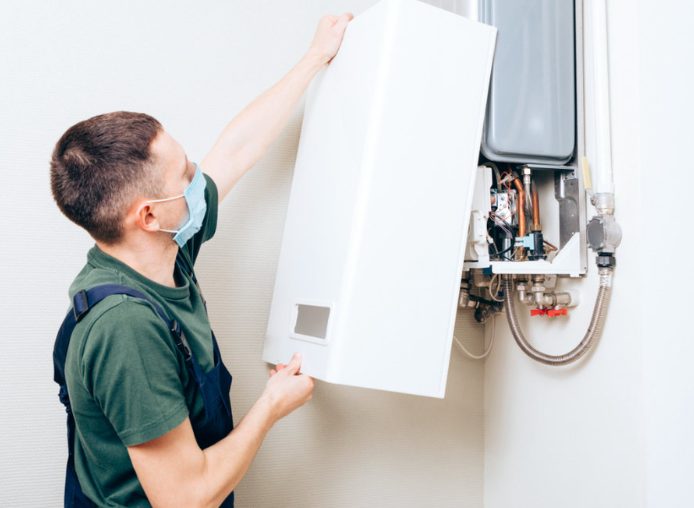Deciding whether to repair or replace your furnace can feel overwhelming, especially during the colder months when your comfort depends on it. Many homeowners turn to professional Heating Services to determine the most cost-effective and reliable solution. The decision usually depends on the age of your system, the frequency of repairs, overall efficiency, and your household’s long-term heating needs. This guide breaks down the main considerations so you can make an informed choice.
Understanding the Lifespan of a Furnace
Most furnaces last between 15 and 20 years when properly maintained. If your system is younger than 10 years, repairs are often a smart choice. However, once your furnace approaches or surpasses the 15-year mark, replacement becomes more cost-effective.
Routine maintenance, such as filter replacements and annual tune-ups, can extend the lifespan of your furnace. If these steps have been skipped, your system may wear out faster.
Signs It May Be Time to Repair
Repairs can be the right move when issues are minor or the furnace is still relatively young. Common signs that repairs may solve the problem include:
Unusual Noises
Banging, squealing, or rattling noises could indicate loose parts, clogged burners, or worn belts. These issues are typically repairable and do not require replacement.
Short Cycling
When your furnace turns on and off too frequently, it may be due to a faulty thermostat or clogged filter. Both can be fixed with minimal expense.
Inconsistent Heating
Cold spots in certain rooms could signal ductwork leaks or minor blower issues. Repairing these problems is usually more affordable than a full replacement.
Rising Utility Bills
While higher bills often signal reduced efficiency, small repairs like sealing duct leaks or replacing filters can improve performance without investing in a new furnace.
When Replacement is the Smarter Choice
Sometimes replacing your furnace is the more cost-effective decision. Here are key situations where replacement is recommended:
Age of the Furnace
If your furnace is over 15 years old, it has likely reached the end of its efficient life. Even with repairs, older systems consume more energy and cost more to run.
Frequent Repairs
If you find yourself calling for repairs multiple times per year, those costs add up quickly. A replacement furnace eliminates recurring issues and provides peace of mind.
Decreased Efficiency
Older systems often have efficiency ratings of 60–70%. Newer models can achieve over 90% efficiency, meaning you spend less on monthly energy bills.
Safety Concerns
A cracked heat exchanger or gas leaks pose significant risks to your household. In such cases, replacement is not just a better choice—it’s a necessary one for safety.
Cost Comparison: Repair vs. Replacement
Before making a decision, it helps to compare repair costs to replacement costs.
- Repair Costs: Minor fixes may range from $100 to $500, while major repairs can reach $1,500 or more.
- Replacement Costs: A new furnace installation typically costs between $3,000 and $7,500, depending on size, efficiency rating, and brand.
A helpful rule of thumb is the 50% Rule: If the cost of repairs is 50% or more of the cost of replacement, investing in a new furnace is the smarter option.
Energy Efficiency and Long-Term Savings
One of the strongest reasons to replace your furnace is energy efficiency. High-efficiency furnaces use advanced technology to produce more heat with less fuel, lowering your monthly bills. Over time, these savings often offset the upfront cost of replacement.
Additionally, many utility companies offer rebates for installing energy-efficient systems, further reducing the cost.
Environmental Impact
Modern furnaces not only save money but also reduce your carbon footprint. By consuming less fuel, they produce fewer greenhouse gas emissions. If sustainability is important to you, upgrading to a high-efficiency furnace is a smart investment.
Importance of Professional Heating Services
Whether you’re considering a repair or replacement, consulting professionals is key. Expert technicians can:
- Perform detailed inspections to identify underlying issues.
- Provide accurate cost estimates for both repair and replacement.
- Recommend systems suited to your home’s size and heating needs.
- Ensure installations meet safety and efficiency standards.
Professional Heating Services help you avoid costly mistakes and ensure you get the most out of your investment.
Tips to Extend the Life of Your Furnace
Even if you decide to repair or replace your furnace, regular maintenance is crucial. Follow these tips to maximize your system’s performance:
- Change filters every 1–3 months.
- Schedule annual tune-ups with a certified technician.
- Keep vents clear of dust and blockages.
- Monitor your thermostat settings for optimal efficiency.
Final Thoughts
Knowing when to repair or replace your furnace comes down to balancing cost, efficiency, and long-term comfort. Repairs are ideal for younger systems with minor issues, while replacement makes more sense for older, inefficient, or frequently failing units. By working with trusted Heating Services, you can make the right choice for your home and enjoy consistent comfort through the coldest months of the year.





